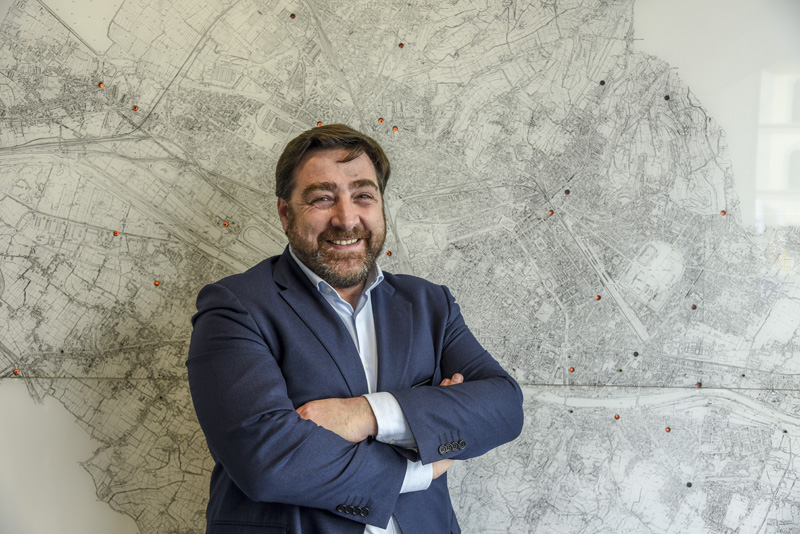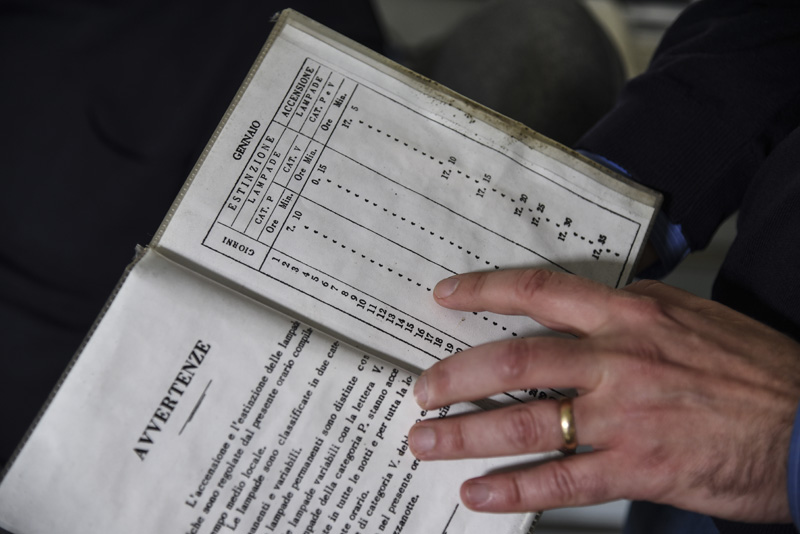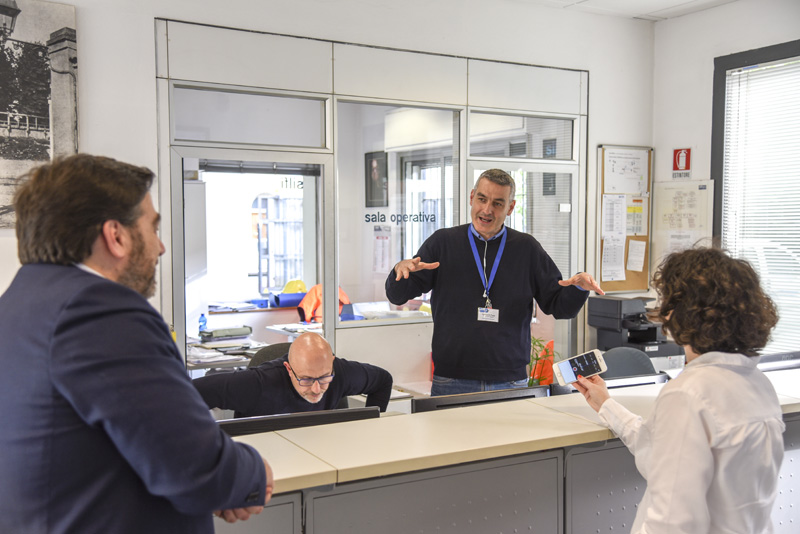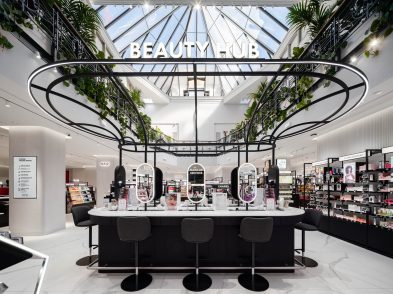An unassuming building set between the English Cemetery and Campo di Marte train station is home to a control centre for the city’s contemporary infrastructure. Smart street lamps, traffic lights and electric vehicle charging units are among some of Silfi’s many responsibilities. The Florentine spoke with the company’s down-to-earth president Matteo Casanovi.

Matteo Casanovi / All photos by Marco Badiani
Matteo Casanovi: Florence has approximately 47,000 street lights and they are all turned on every night by these two keys here {points to a basic mechanism on the control panel in the building’s lobby}. In the midst of all this technology, Florence is practically the only city left in Italy to switch its lights on manually. There are teams stationed around the city who check the natural illumination and decide when it’s best to turn on the lights. If a storm is brewing and darkness is descending in Fiesole and Campo di Marte but it’s still light in Isolotto, we can make the call to illuminate the city, or not. That sort of decision enables us to make energy savings if you consider that it costs 100 euro per minute to power the lighting. There are also times when we turn on the lights as a mark of reassurance, like when the tornado struck lungarno Colombo and surroundings in August 2015. There’s an old booklet dating to 1931, which we keep here at the control desk, which states the approved switch on and switch off times for the city’s electric street lights for every day of the year. Those official times still apply, but we can decide whether to turn on the lights earlier—switching them on later at night is never an option, neither is switching them off earlier in the morning. The technology always plays its part of course with advanced systems to indicate any faults in the system and real-time measurement of the natural light. We turn on the lights at about 30 lux, although the perception of the human eye results in variability {gestures to the handwritten daily record of switch-on times, which indicates lights-on even as low as 15 lux}. Florence has two circuits, one of which is turned off at 11.15pm to save electricity until we complete the LED light installation. You can notice the moment it happens, especially along the lungarni, with one light on and the next one off.
Helen Farrell: A plan called #FirenzeCambiaLuce is currently underway to revolutionize Florence’s street lighting. Why this change and what does it consist of?
MC: We’ve installed 6,500 LED lights out of 30,000. There were already approximately 5,000 LED already installed when we began, so there are about 11,000 LED at the moment. We learnt from Milan who did a similar operation three years ago. They ordered four different types of lights and we ordered 42 different ones: for short streets and wider ones, piazzas and gardens. The very nature of Florence means varying sorts of lights are required. Yes, the goal of using LED is to reduce energy costs by 40 or 50 per cent, but it needs to be planned carefully to avoid LED being perceived as darker and cooler than the orangey glow of sodium lamps. Light, after all, is all about sociality and communicating a feeling of safety.
HF: How are residents reacting to this change?
MC: We’ve had good feedback so far. At the moment you might find an all-LED street next to an all-sodium street, which are almost too warm in feel. LED lights have their own cone, so you can’t see the facades of the building or a woman at the window on the top floor. What you can see better are the pavements and the street. It’s not the role of street lighting to illuminate the buildings. The important thing about this project is it doesn’t apply to the UNESCO historic centre of Florence. As you showed on the December cover of The Florentine, light is beauty. In the future, that photo taken at night from the air will show the historic centre as an island surrounded by more darkness, as seen from the sky, in the suburbs, although the streets will be well lit. There’ll be less light pollution, so we’ll see the stars!
HF: I’m pleased to hear that. Our readers were concerned about the impact.
MC: Changing the lighting in the suburbs is one thing. Changing the light along via Martelli or via Calzaiuoli would mean removing half of its beauty. We want to change the lights in the historic centre to LED as well, but that will be done with an entirely different sort of LED to the type used for street lighting.
HF: We keep hearing about Florence as a smart city.
MC: The lamps we’re installing are smart ones. Each has a universal socket that can host meteorological, environmental or sound sensors, WI-FI or even 5G plug-ins when they’ve been invented. Every lamp in Florence will have that potential and feed back data to us. Effectively, we will have upgraded the city’s infrastructure for the future. At the beginning of May, we’ve been invited with Mayor Nardella to Tirana so that they can learn from Florence as a best practice. Every city that does this operation makes it easier for the next one to improve for the future.
HF: Can you explain how the electric vehicle charging points work?
MC: They were installed by Enel, but Silfi manages them in Florence. People call us from all over Italy wanting to know how the electric vehicle charging points work. They want to come to Florence to recharge their vehicles since the city is leading the way in Italy with its 173 points compared with 70 or so in Milan and 120+ in Rome. The other advantage is that, as long as your vehicle is registered, you can drive into the city centre even during restricted circulation hours.
HF: What can we expect from this year’s F-Light Festival?
MC: This year, San Miniato is celebrating 1,000 years since its foundation, so we would love to seize the opportunity to redo the basilica’s permanent lighting. Last year we renovated the external lighting of the Sant’Ambrogio market and the church frontage. In previous editions we intervened on the Loggia del Pesce and the façade of Santa Croce; every year there has to be something that remains beyond the festival.
For more information about the changes in street lighting, see www.firenzecambialuce.it.
To find out more about the electric vehicle charging points in Florence, see www.eneldrive.it.










